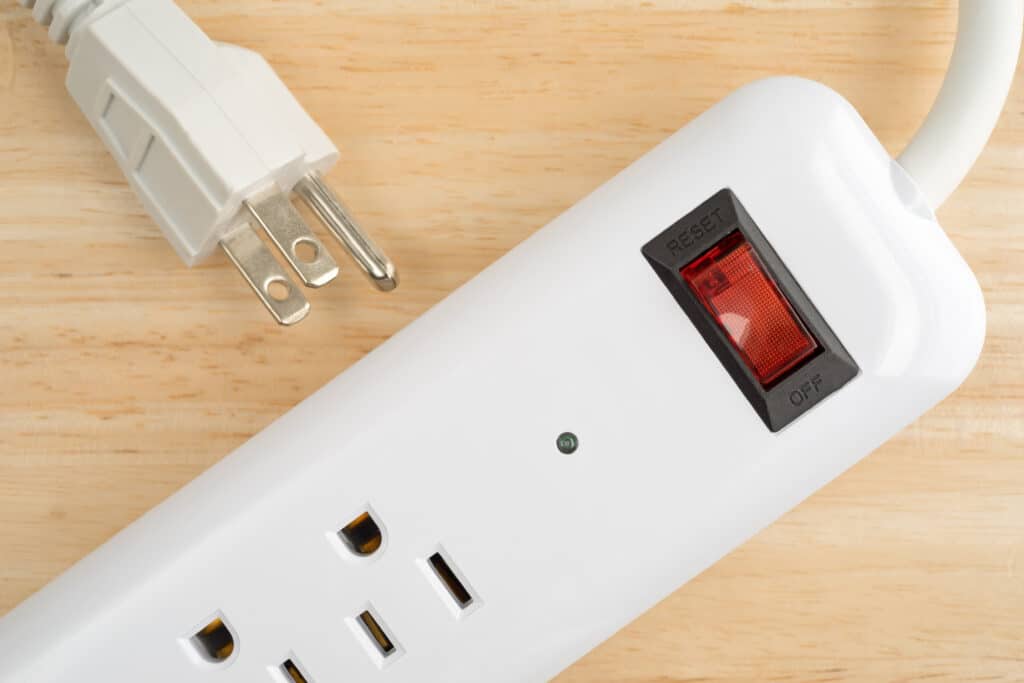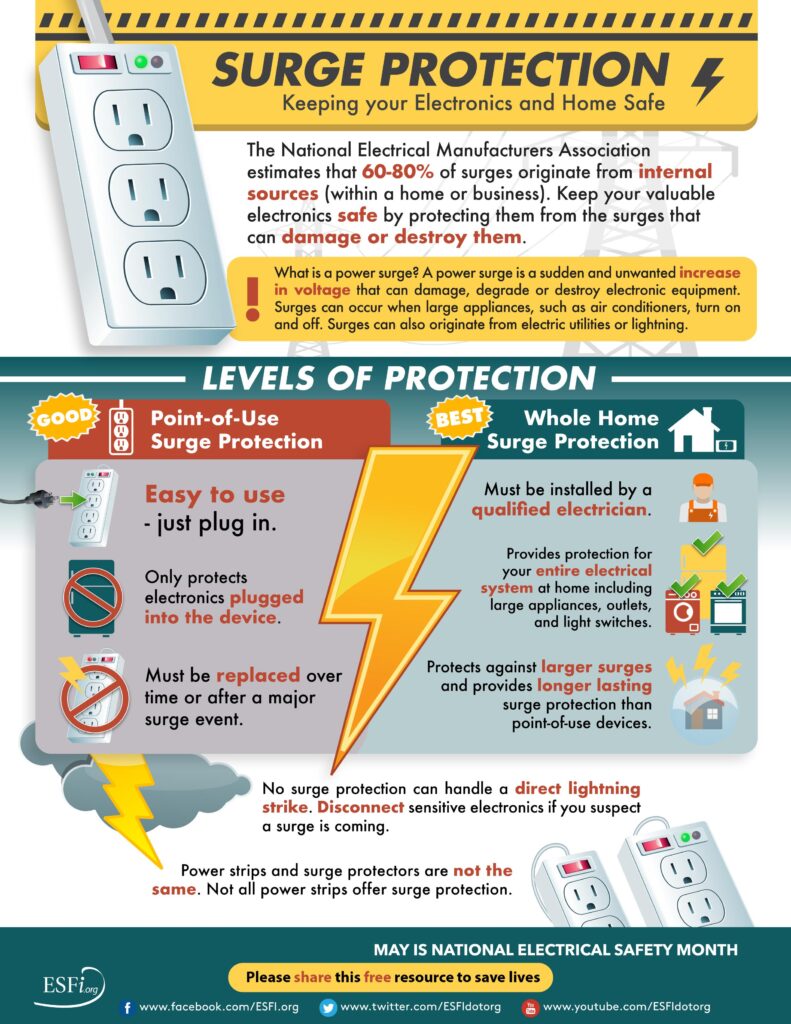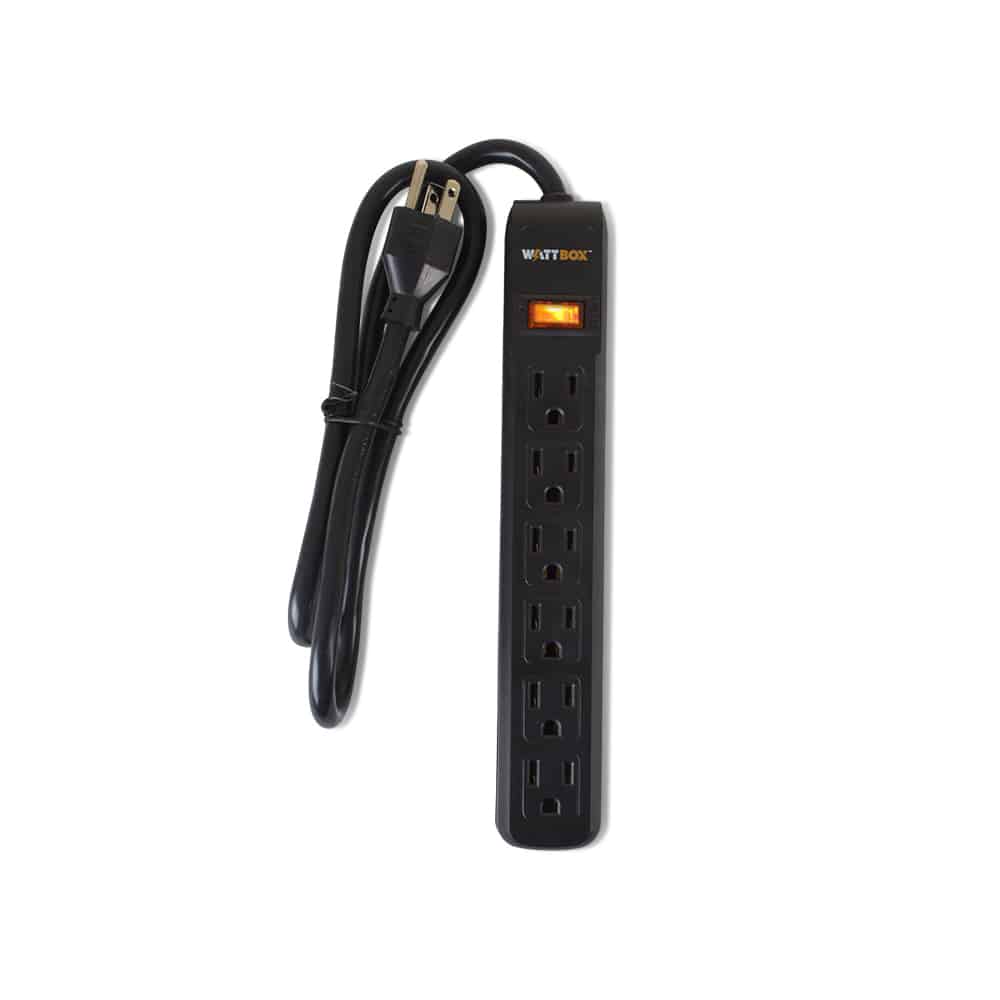When protecting your smart home devices from power surge damage, do you know the difference between a surge protector vs. a power strip vs. UPS (Uninterruptible Power Supply) unit? Many homeowners with home automation don’t, leading to costly mistakes. While these power surge protection options may seem interchangeable, each uniquely safeguards your smart home system, equipment, and devices.
Below we’ll break down the differences between surge protectors vs. power strips vs. UPS units to help you determine which is best for your smart home.
Surge Protector vs. Power Strip vs. UPS: What is the Difference?
When choosing the best power surge protection option for your smart home, you must consider the number of smart devices, their power needs, and backup power requirements. Investing in the correct power surge protection option provides homeowners peace of mind when their valuable smart home investments are protected from expensive electrical damage.
Below we’ll share some FAQs homeowners ask about a surge protector vs. power strip vs. UPS unit with tips on choosing the best option for your smart home.
What is the difference between a surge protector vs. power strip?
Surge protectors protect electronics and appliances from electrical damage caused by power surges. Most people know about surge protector devices (SPDs) which are designed to limit and/or divert high voltage spikes from power surges that cause damage to your electrical system and electronics.
There are also surge protector systems, such as whole-home surge protection, that protect your entire electrical distribution network from major surges. Power strips offer additional outlets for multiple devices to connect for power. Not all power strips offer surge protection.

Are all power strips surge protectors?
Homeowners commonly ask, “Is a power strip a surge protector?” The answer depends on the model because not all power strip products offer surge protection. This is a common smart home mistake homeowners make with their surge protection.
As mentioned above, not all power strips are surge protectors. A power strip without surge protection is essentially an extension cord. So, if you’re wondering about the difference between a surge protector vs. extension cord too, it would be the same answer as a power strip without surge protection – not all models are surge protectors. When shopping for power strips for your smart home, make sure it includes surge protection.

Can I plug a surge protector into an extension cord?
Plugging a surge protector into an extension cord is also known as “daisy chaining”, which isn’t recommended to prevent electrical fires and equipment damage. Avoid misusing extension cords by plugging them into a direct outlet and away from physical barriers, like heavy items or rugs.
Can you plug a surge protector into a surge protector?
Do not “daisy chain” surge protectors for the above reasons. Always plug surge protector devices (SPDs) directly into a wall outlet.
What is the advantage of a surge protector over a power strip?
The biggest advantage of a surge protector over a power strip is that it helps prevent electrical damage caused by high transients from power surges. If the power strip model doesn’t include surge protection, voltage spikes can fry your smart home devices that are connected to it.
Some advantages of using a surge protector over a power strip include:
- Energy-efficient design to reduce electrical overloads and internal power surge risks
- Surge protection from electrical damage that can break or destroy costly smart home technologies
- Safer home environment to help prevent electrical fires from high energy consumption devices
Home automation manufacturers typically don’t include surge protection in their products. They usually advise plugging smart home technology into surge protection devices (SPDs) or protecting them with power management systems.
Smart home surge protection protects expensive home automation technologies, while power strips without surge protection are designed for only powering devices plugged into them. If there’s a major power surge and smart devices are connected to a power strip without surge protection, you risk high repair and replacement costs from electrical damage.

What is the difference between a UPS vs. surge protector?
UPS units are surge protectors. They provide backup power in case of an outage and offer basic surge protection. They’re not designed to be long-lasting for extended outages but are practical for accessing your smart home systems and preventing electrical damage.
There are three types of UPS systems:
- Standby UPS– basic battery backup and surge protection
- Line-interactive UPS– balances high and low voltage fluctuations for consistent voltage quality
- Online, Double Conversion UPS- designed for commercial use equipment
When understanding the differences between a UPS vs. surge protector, remember all UPS units are surge protectors — but at the basic level and meant more for battery backup during outages.
If you need help deciding which UPS unit is best for your smart home, contact AIS for equipment recommendations. We help guide homeowners through the best surge protection products for their unique smart homes.
Surge Protector vs. Power Strip vs. UPS: Which is the Best Smart Home Surge Protection Option?
Now that you know the differences between a surge protector vs. power strip vs. UPS unit, the next step is to decide which is best for your smart home. According to the Electric Safety Foundation International (ESFI), they recommend that homeowners get multiple levels of surge protection for optimal coverage.
Every smart home is unique and requires various surge protection and power management solutions. Below we’ll break down the three basic smart home surge protection systems homeowners should always invest in.
Whole Home Surge Protection with Power Management Integration for Total Coverage from Major Surges
Whole home surge protection should always be the first option because it sets the foundation for smart home power management. It protects your entire home from significant power surges and voltage spikes.
It’s important to note that small surges may pass through, which is why multiple levels of surge protection are always recommended. Not all power fluctuations are equal, so getting coverage from high and low-voltage spikes and everything in between is essential.

One of the best benefits of wired home automation is that whole-home surge protection can be integrated for easier power management and power surge prevention.
Here are some smart home benefits of integrating a whole-home surge protection system:
- Remote power management– real-time notifications via a mobile app if a device goes offline or unbalanced electrical loads
- Advanced troubleshooting– reboot single devices without disrupting the entire system
- Control system integration– centralize all smart home and power management systems into one platform for easier use
When homeowners can control their smart home and surge protection systems in one place, it makes for easier power management.
Uninterruptable Power Supply (UPS) Units for Backup Power During Outages
The second level of surge protection for smart homes we always suggest is uninterrupted power supply (UPS) units. As mentioned, during power outages, UPS units are a battery backup and provide a basic level of surge protection.

Unless it’s an extended outage or direct lightning strike, layering UPS units with whole-home surge protection allows homeowners to access their smart home systems without disruption and get additional protection.
Low-Voltage Surge Protection Devices (SPDs) for Smaller Technologies and Added Protection
Last on our list of smart home surge protection options homeowners should always invest in are low-voltage surge protection devices (SPDs). Smart power strips and plug-in adapters with surge protection are the most common SPDs people know because they’re available on the consumer market.
What separates low-voltage SPDs from standard ones is that they use less voltage than the average 120 volts used in homes. Smart homes commonly use low-voltage smart lights and low-voltage pre-wiring for home automation systems, security cameras, and more. Pairing low-voltage SPDs with low-voltage home automation provides a more energy-efficient solution.

At AIS, our low-voltage home automation installers can integrate your smart home with power management. Our custom system integrators can install low-voltage lighting, low-voltage prewiring for smart home audio and smart home security systems, and more. Ask us how we can help lower your voltage use at your smart home for better power management.
Learn Which Surge Protection Option is Best for Your Smart Home with AIS
We hope this guide on the differences between a surge protector vs. power strip vs. UPS helped you decide on the best smart home surge protection option. At AIS, we understand that power management and home automation integration can be complex. Skip the hassle of being an electrical and home automation expert, and let us help you decide which surge protection options are best for your unique smart home.
Ready to protect your smart home from power surge damage? Use our budget calculator to plan expenses, or contact AIS to integrate power management into your smart home today!



